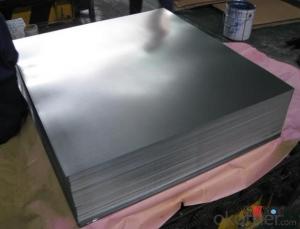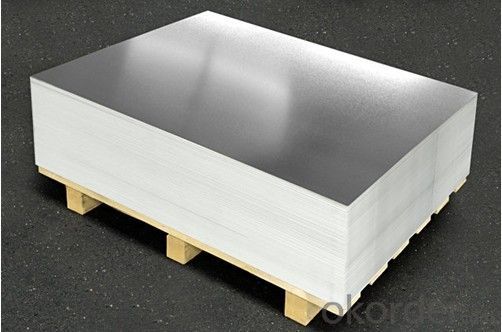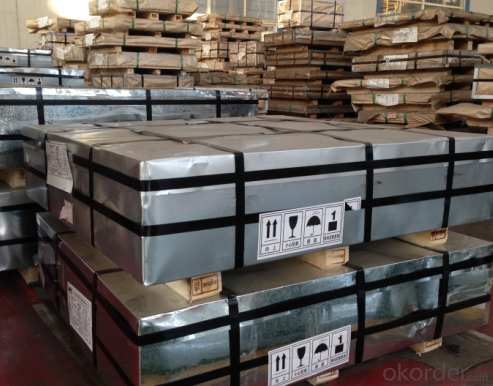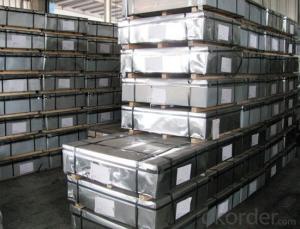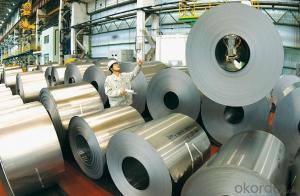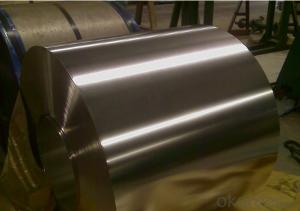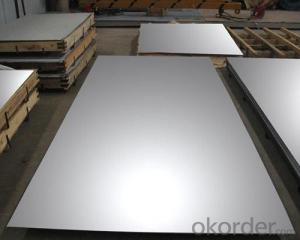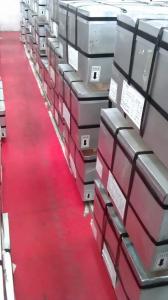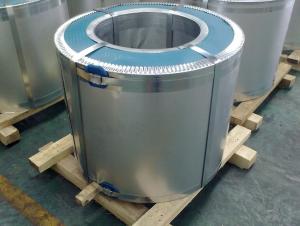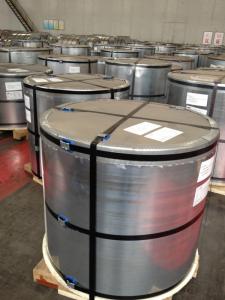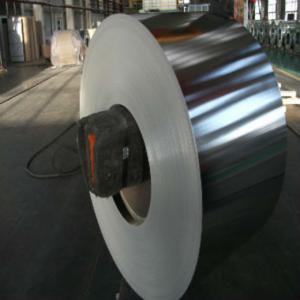Tinplate (ETP) Coil and Sheets for Foods Packaging
- Loading Port:
- Tianjin
- Payment Terms:
- TT OR LC
- Min Order Qty:
- 25 m.t.
- Supply Capability:
- 7000 m.t./month
OKorder Service Pledge
OKorder Financial Service
You Might Also Like
1.Structure of Tinplate (ETP) Coil and Sheets for Foods Packaging Description
Electrolytic Tin Plate Coils and Sheets for Foods Metal Packaging, is one thin steel sheet with a coating of tin applied by electrolytic deposition. Tinplate made by this process is essentially a sandwich in which the central core is strip steel. This core is cleaned in a pickling solution and then fed through tanks containing electrolyte, where tin is deposited on both sides. As the strip passes between high-frequency electric induction coils, it is heated so that the tin coating melts and flows to form a lustrous coat.
2.Main Features of the Tinplate (ETP) Coil and Sheets for Foods Packaging
Appearance – Electrolytic Tin Plate is characterized by its beautiful metallic luster. Products with various kinds of surface roughness are produced by selecting the surface finish of the substrate steel sheet.
Paintability and printability – Electrolytic Tin Plates have excellent paintability and printability. Printing is beautifully finished using various lacquers and inks.
Formability and strength – Electrolytic Tin Plates have got very good formability and strength. By selecting a proper temper grade, appropriate formability is obtained for different applications as well as the required strength after forming.
Corrosion resistance – Tinplate has got good corrosion resistance. By selecting a proper coating weight, appropriate corrosion resistance is obtained against container contents. Coated items should meet 24 hour 5 % salt spray requirement.
Solderability and weldability – Electrolytic Tin Plates can be joined both by soldering or welding. These properties of tinplate are used for making various types of cans.
Hygienic – Tin coating provides good and non toxic barrier properties to protect food products from impurities, bacteria, moisture, light and odours.
Safe – Tinplate being low weight and high strength makes food cans easy to ship and transport.
Eco friendly – Tinplate offers 100 % recyclability.
Tin is not good for low temperature applications since it changes structure and loses adhesion when exposed to temperatures below – 40 deg C.
3.ETinplate (ETP) Coil and Sheets for Foods Packaging Images
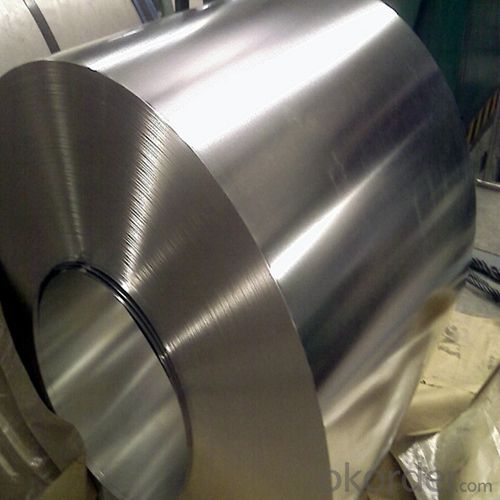
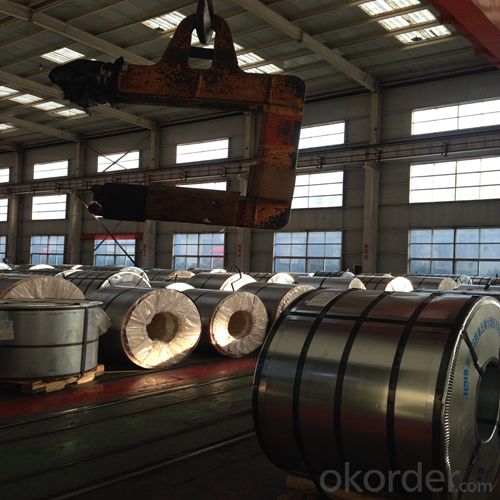
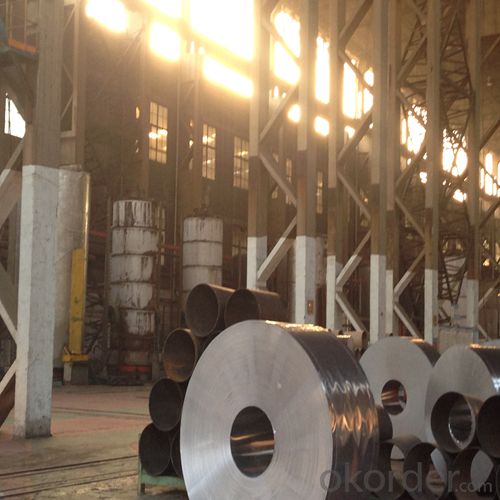
4.Tinplate (ETP) Coil and Sheets for Foods Packaging Specification
Standard | ISO 11949 -1995, GB/T2520-2000,JIS G3303,ASTM A623, BS EN 10202
|
Material | MR,SPCC |
Thickness | 0.15mm - 0.50mm |
Width | 600mm -1150mm |
Temper | T1-T5 |
Annealing | BA & CA |
Coil Inner Diameter | 508mm |
Weight | 6-10 tons/coil 1~1.7 tons/sheets bundle |
Passivation | 311 |
Oil | DOS |
Surface | Finish,bright,stone,matte,silver |
5.FAQ of Tinplate (ETP) Coil and Sheets for Foods Packaging
- How are the Electrolytic Tin Plates specified?
The Electrolytic Tin Plates are specified as per the steel base, extent of tempering, the coating weight, annealing method and the surface finish.
- How many types there are for base steels?
The base steels are of three types: Type MR, L, D
- Q: How does tinplate perform in terms of UV resistance?
- Tinplate has limited UV resistance and may experience some degree of degradation when exposed to direct sunlight for prolonged periods.
- Q: Can tinplate be used for packaging personal hygiene products?
- Yes, tinplate can be used for packaging personal hygiene products. Tinplate is a commonly used material for packaging due to its durability, corrosion resistance, and ability to preserve the quality and freshness of products. It is commonly used for packaging various personal hygiene items such as soaps, shampoos, lotions, and cosmetics.
- Q: How can tinplate be customized for branding purposes?
- Tinplate can be customized for branding purposes through various methods such as printing the brand logo and design on the surface of the tinplate, using different colors and finishes to enhance the visual appeal, embossing or debossing the brand name or slogan on the tinplate, and even incorporating unique shapes or patterns that represent the brand identity. These customization techniques help in creating a distinctive packaging solution that effectively promotes the brand and attracts customer attention.
- Q: How does the tin coating affect the weldability of tinplate?
- The tin coating on tinplate improves the weldability of the material. It acts as a protective layer, preventing oxidation and promoting better adhesion during the welding process. This ensures a stronger and more reliable weld.
- Q: Can tinplate be used for beverage cans?
- Yes, tinplate can be used for beverage cans. Tinplate is commonly used as a coating for steel cans, providing them with corrosion resistance and a shiny appearance.
- Q: How does the thickness of tinplate affect its strength and durability?
- The thickness of tinplate directly influences its strength and durability. Generally, thicker tinplate tends to be stronger and more durable compared to thinner tinplate. A thicker tinplate has a higher resistance to bending, denting, or puncturing, making it less prone to damage during handling, storage, or transportation. Additionally, the increased thickness provides better protection against corrosion and extends the tinplate's lifespan. However, thicker tinplate also tends to be heavier and more expensive. Therefore, finding the right balance between thickness and cost is crucial when considering the strength and durability requirements for a specific application.
- Q: What are the different types of tinplate printing techniques?
- There are three main types of tinplate printing techniques: lithography, silk screen printing, and varnishing.
- Q: What are the advantages of using tinplate for household appliances?
- There are several advantages of using tinplate for household appliances. Firstly, tinplate is highly resistant to corrosion and rust, ensuring the longevity and durability of the appliances. Additionally, tinplate provides excellent heat resistance, making it suitable for appliances that generate high temperatures. Furthermore, tinplate is lightweight yet strong, allowing for easy handling and transportation of the appliances. Lastly, tinplate is a sustainable and eco-friendly material, as it is recyclable and reduces the carbon footprint of the manufacturing process.
- Q: Can tinplate be used for art and sculptures?
- Yes, tinplate can be used for art and sculptures. Its malleability and durability make it a suitable material for creating various artistic forms and sculptures. Additionally, tinplate can be easily manipulated, painted, and decorated, allowing artists to explore their creativity and produce unique artworks.
- Q: How does tinplate packaging contribute to product protection against oxidation?
- Tinplate packaging contributes to product protection against oxidation by providing a barrier between the product and the surrounding environment. Tinplate is made by coating thin sheets of steel with a layer of tin, which acts as a protective barrier against moisture, air, and other external elements that can cause oxidation. This barrier prevents the entry of oxygen, which is necessary for oxidation to occur, thereby extending the shelf life of the product and maintaining its quality and freshness.
Send your message to us
Tinplate (ETP) Coil and Sheets for Foods Packaging
- Loading Port:
- Tianjin
- Payment Terms:
- TT OR LC
- Min Order Qty:
- 25 m.t.
- Supply Capability:
- 7000 m.t./month
OKorder Service Pledge
OKorder Financial Service
Similar products
Hot products
Hot Searches
Related keywords
